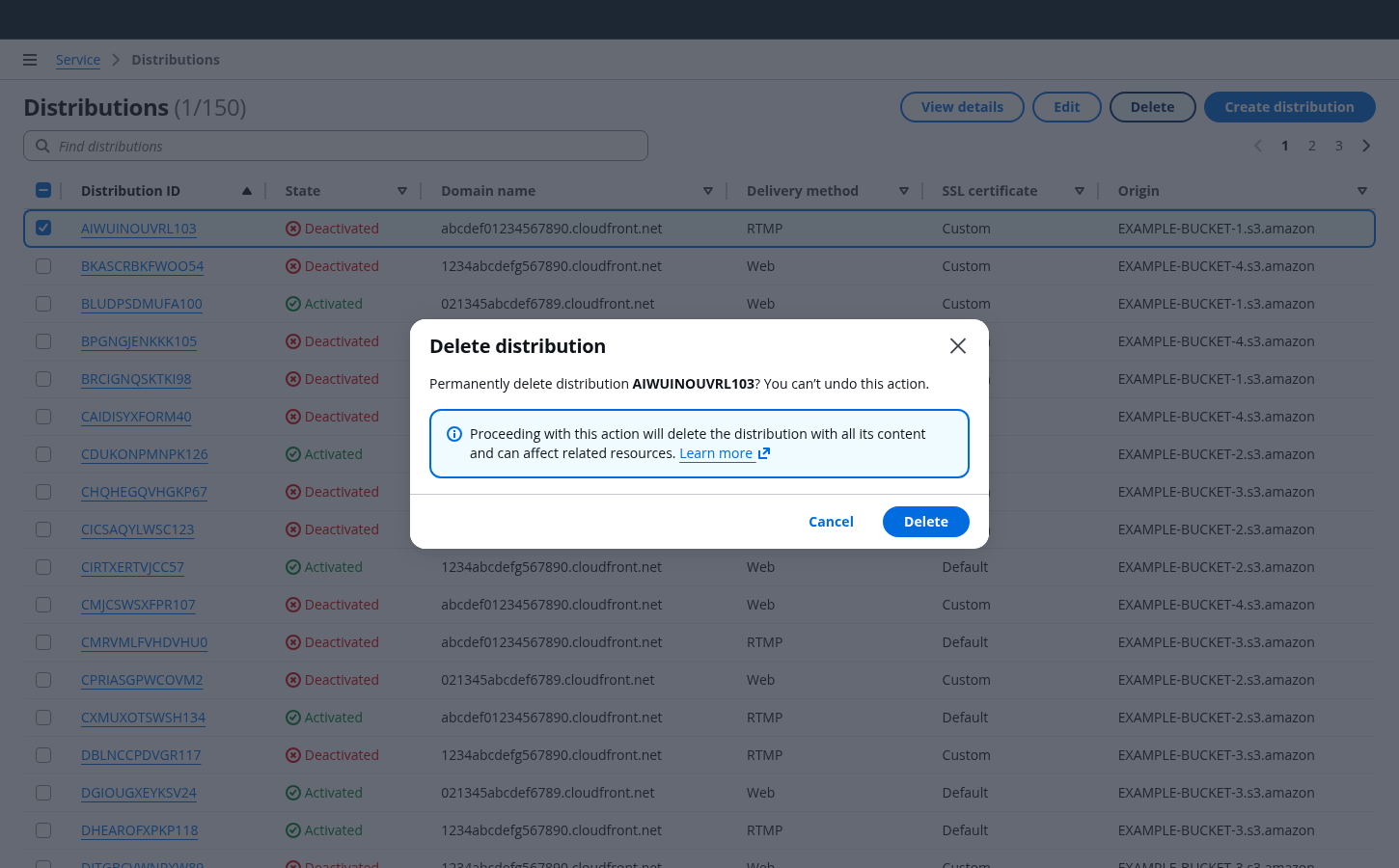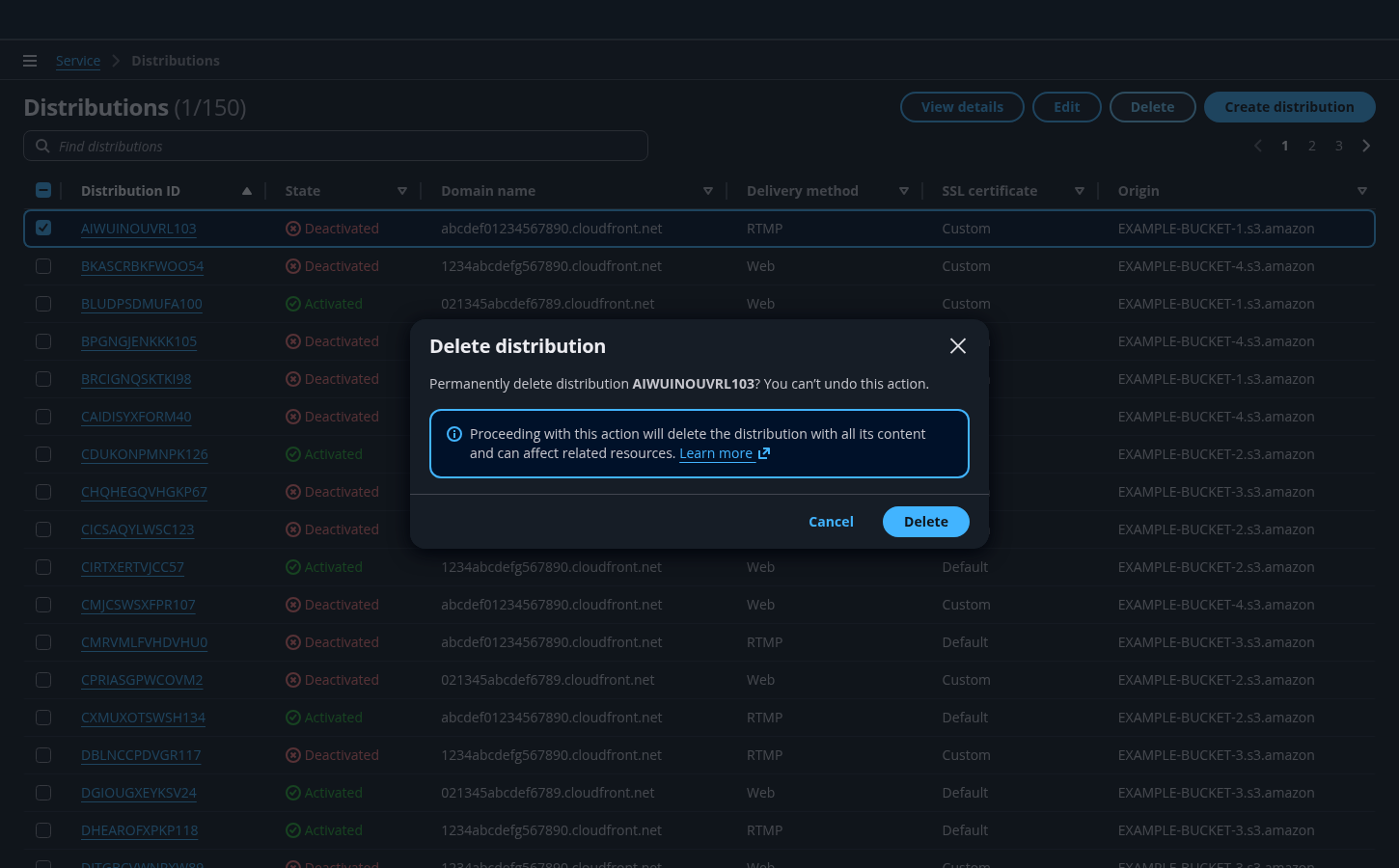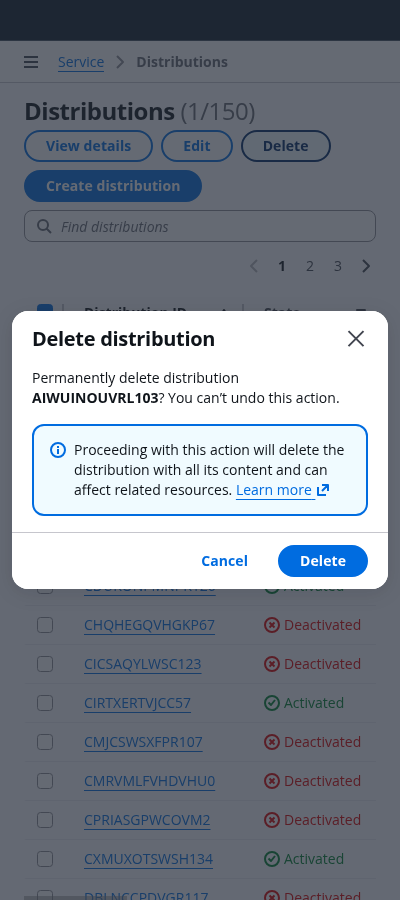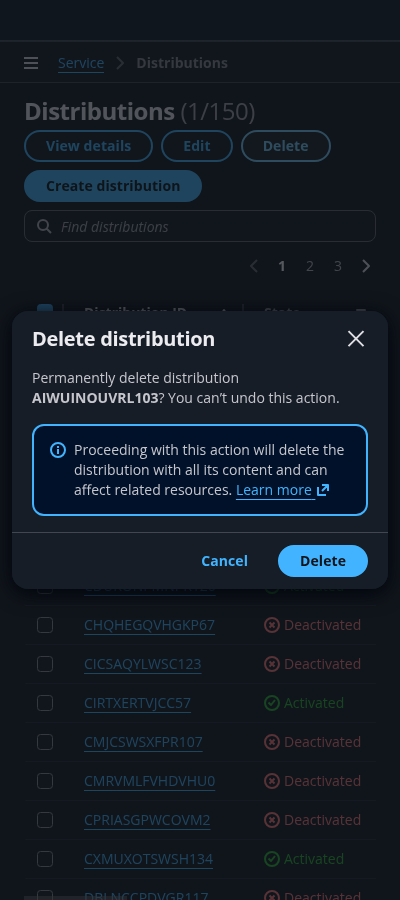Delete with simple confirmation
On this page
Building blocks
Delete with simple confirmation can be used for single-resource deletion or multi-resource deletion.




A. Modal title
Use Delete together with the resource type. For example: Delete instance
B. Reassurance
Make sure the user understands everything that is being deleted, and that the action is irreversible. Use important details associated with the resource being deleted, such as the resource name or other unique identifiers. Use bold font weight to expose resource identifier. For example: Permanently delete distribution CMRVMLFVHDVHU0? You can’t undo this action.
C. Consequences
State the possible consequences of the action like severity, outcome, and potential cascading effects of the action. This helps the user be aware of the actual impact and scope of the destructive action. Use the info alert format to present this information. If possible, add an external link to detailed documentation for users to consult.
D. Buttons
Allow users to execute the resource deletion or to exit the delete flow.
General guidelines
Do
- Use the delete with simple confirmation pattern for running resources whose deletion will not affect other infrastructure. For example: A user deleting a CloudWatch alarm.
- Inform users about the severity and consequences of the delete action.
- Give users additional contextual information about the resource being deleted, to adequately inform them about the deletion.
Don't
- Don't use the delete with simple confirmation pattern if deleting the resource poses a risk of breaking other infrastructure, or causing an outage. Use delete with additional confirmation instead.
Writing guidelines
General writing guidelines
Use sentence case, but continue to capitalize proper nouns and brand names correctly in context.
Use end punctuation, except in headers and buttons. Don’t use exclamation points.
Use present-tense verbs and active voice.
Don't use please, thank you, ellipsis (...), ampersand (&), e.g., i.e., or etc. in writing.
Avoid directional language.
For example: use previous not above, use following not below.
Use device-independent language.
For example: use choose or select not click.
Component-specific guidelines
Use sentence case. All words are lowercase except the first word in the phrase, proper nouns, acronyms, and service and feature names. Avoid capitalizing feature names unless absolutely necessary, such as an AWS-specific term or concept.
Use second person (you, your) when you address the user.
Localize the text on the user interface, including the confirmation text.
For example: If the interface is in French, all text including the confirmation text to be entered, should be written in French.
Use terminal punctuation for all modal text, except for any text in a list format.
Modal title
Use the format: Delete [resource type]
For example:
For single resource: Delete instance
For multiple resources: Delete instances
Button text
For the button that performs the action, use this text: Delete. If your deletion action is called something different, such as Terminate, then use the same verb in the modal title and button.
For the button to dismiss the dialog box without completing the action, use this text: Cancel
Accessibility guidelines
General accessibility guidelines
Follow the guidelines on alternative text and Accessible Rich Internet Applications (ARIA) regions for each component.
Make sure to define ARIA labels aligned with the language context of your application.
Don't add unnecessary markup for roles and landmarks. Follow the guidelines for each component.
Provide keyboard functionality to all available content in a logical and predictable order. The flow of information should make sense.